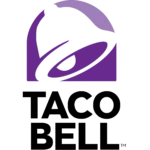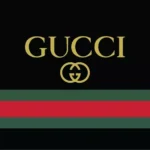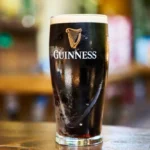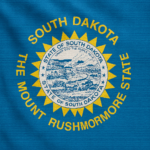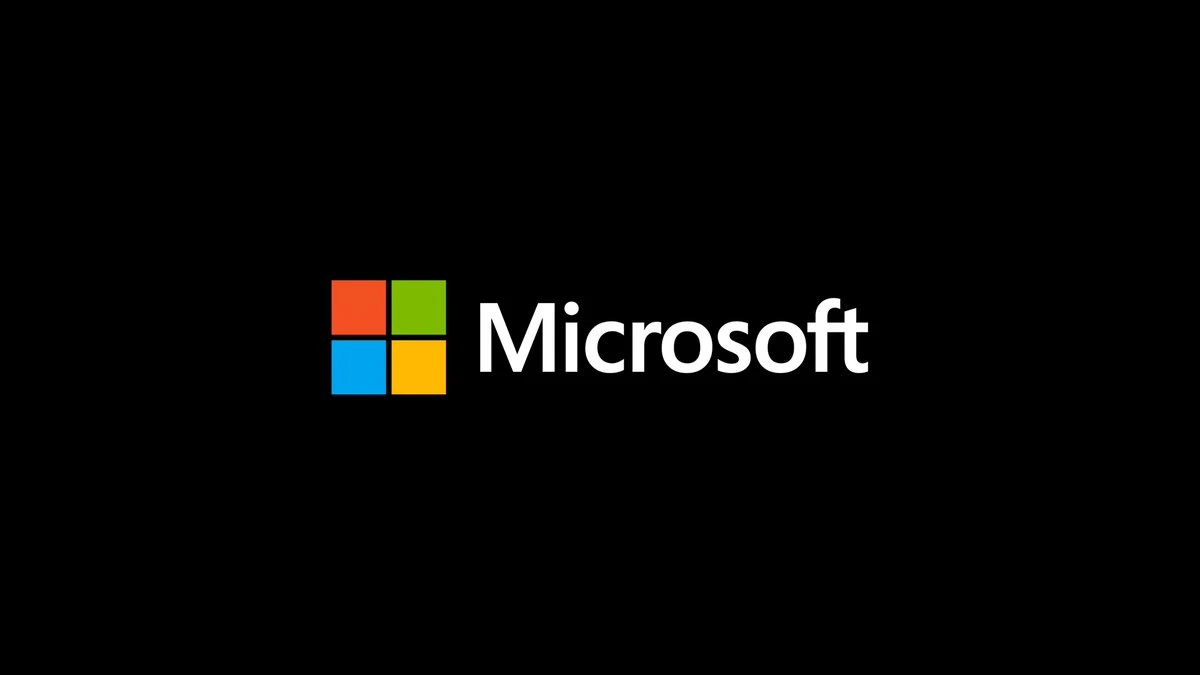
Everyone knows Microsoft—it’s the tech giant behind Windows, Xbox, and Office. But beyond the familiar products and the story of Bill Gates, the company’s history is packed with surprisingly fun and fascinating details. From a peculiar office tradition involving M&Ms to the hidden purpose behind a popular computer game, Microsoft’s journey is full of clever innovations and memorable moments. This blog will dive into some of the most interesting and often-overlooked facts that have shaped one of the world’s most influential companies.
The IBM Deal and PC DOS
In 1980, Microsoft secured its first major deal with IBM, a pivotal moment that established the company’s trajectory. IBM sought an operating system for its new computer, and Microsoft delivered with PC DOS, a system they had purchased from Seattle Computer Products and licensed to IBM for a flat fee of $50,000. This was a strategic move, as Microsoft retained the rights to license the OS to other computer manufacturers, a decision that would prove incredibly lucrative in the coming years. This initial deal laid the foundation for Microsoft’s dominance in the software industry.
Windows 1.0 Release
The first version of Microsoft Windows, Windows 1.0, was released in November 1985. It was a 16-bit graphical operating environment that ran on top of MS-DOS, rather than being a standalone operating system itself. While it was not a commercial success on the scale of later versions, it marked Microsoft’s initial foray into the GUI (Graphical User Interface) market, a direct response to the competition from Apple’s Macintosh. The software introduced many of the now-familiar elements of Windows, such as the desktop, icons, and menus, and was an important step towards the company’s future success.
Bill Gates’ Billionaire Status
Bill Gates achieved the status of the world’s youngest billionaire in 1987 at the age of 31. This financial milestone was a direct result of Microsoft’s immense growth and success following its Initial Public Offering (IPO) in 1986. Gates’ foresight and leadership in the burgeoning personal computer industry led to his rapid accumulation of wealth, making him a symbol of technological innovation and entrepreneurial success. His status as a billionaire at such a young age highlighted the explosive potential of the tech industry.
Xanadu 2.0
Bill Gates’ famous property, Xanadu 2.0, was valued at a staggering $123 million as of 2017. This impressive valuation reflects not only its prime location but also the advanced technology and design incorporated into the house. The mansion is known for its custom-built features, including a library with a domed roof and a system that allows guests to customize the music and artwork in each room. The property’s name is a reference to the fictional palace from the film Citizen Kane, and its value is a testament to Gates’ success and his passion for technology and architecture.
The Windows Jingle
The iconic Windows Jingle, a short musical sound played upon system startup, was created for Windows 95 by renowned musician Brian Eno. The jingle, officially named “The Microsoft Sound,” was composed to evoke a sense of optimism and reliability. Eno was given a list of adjectives like “inspirational,” “sentimental,” and “futuristic” to guide his composition. The result was a six-second sound that became instantly recognizable worldwide, an auditory hallmark of the Windows experience that persists to this day.
Microsoft’s M&M Tradition
At Microsoft, a unique tradition exists where employees celebrate their work anniversaries by bringing in 1lb of M&Ms for each year of employment. For example, an employee celebrating 10 years would bring 10lbs of chocolate. This practice, known as the “M&M tradition,” is a quirky and sweet way for employees to acknowledge their tenure and share their celebration with colleagues, fostering a sense of community and camaraderie within the company.
The Datalink 150 Smartwatch
Microsoft was a pioneer in the smartwatch market with the Datalink 150, released in 1994. Co-produced with Timex, this innovative watch was a precursor to modern smartwatches. It required a PC running Windows 3.1 or later to transfer data, and it was notable for its impressive water resistance of up to 100 meters. This early device demonstrated Microsoft’s forward-thinking approach to wearable technology, long before it became a mainstream consumer product.
The Origin of the Xbox Name
The name Xbox is derived from Windows’ DirectX software, a suite of APIs used for handling tasks related to multimedia and video games on Microsoft platforms. The “X” in Xbox comes directly from “DirectX,” highlighting the console’s close ties to Microsoft’s gaming technology. The console’s operating system and graphics processing were heavily influenced by DirectX, making the name a fitting tribute to its technological heritage.
The Microsoft Logo
The current Microsoft logo is a modern and clean design that combines the wordmark with a symbol. The wordmark uses the Segoe UI font, the same font used throughout the Windows operating system, giving it a familiar and cohesive feel. The symbol is composed of four colored squares, each representing a different product or division: blue for Windows, green for Xbox, red for Office, and yellow for Surface. This logo, introduced in 2012, visually represents the company’s diverse range of products and its unified brand identity.
Microsoft Headquarters’ Amenities
Microsoft’s headquarters offers an impressive range of amenities for its employees, including 35 cafeterias that provide free candy and drinks, with breakfast served until 2 pm. One of these, the Café Redwest, is particularly popular, serving an estimated 2,000 visitors a day. These perks are designed to create a comfortable and productive work environment, reflecting the company’s commitment to employee well-being and satisfaction.
Employee Demographics and Salaries
According to a 2015 list, Microsoft’s employee gender balance was nearly 3/4 male to female. This gender disparity, while not uncommon in the tech industry, highlights the ongoing challenge of achieving diversity. The average salary for a software engineer at Microsoft at that time was approximately $106,000, reflecting the high value the company places on technical talent and expertise.
The 10,000th Patent
Microsoft’s 10,000th patent was a significant milestone, awarded for the Microsoft Surface, a revolutionary laptop-tablet hybrid device. This achievement underscored Microsoft’s commitment to innovation and its focus on developing groundbreaking hardware. The Surface patent represented a culmination of years of research and development, solidifying Microsoft’s position as a leader in both software and hardware design.
The Hyphen Removal
The original company name, Micro-Soft, was officially changed in 1981 with the removal of the hyphen. The founders, Bill Gates and Paul Allen, initially used the hyphen to emphasize the two words: “microcomputer” and “software.” The decision to remove the hyphen was made to simplify the name and create a more unified brand identity as the company grew and became more established.
The Wingdings Controversy
The text “Q33” typed in Microsoft’s Wingdings font has been associated with a sinister and controversial symbol. This became a widely discussed issue after the September 11, 2001 attacks, as Q33 was the flight number of the first plane to hit the Twin Towers. When typed in Wingdings, the letters and numbers combine to form a sequence of symbols that some people interpreted as a message related to the attacks. Although Microsoft maintained it was a coincidence, the eerie correlation led to calls for the symbols to be removed.
The Microsoft Mouse
In 1983, Microsoft entered the peripheral market with the Microsoft Mouse, its first dedicated mouse device. This peripheral was a key component in the company’s efforts to promote graphical user interfaces. It was initially included with every purchase of Microsoft Word, encouraging users to adopt a more interactive and visually driven computing experience. This move helped popularize the mouse as an essential tool for personal computers.
“Bliss” – The Windows XP Background
The most famous Windows desktop background, known as “Bliss,” was a photograph taken in 1996 in Sonoma County, California. The image features a vibrant green hill with a blue sky and white clouds, a serene and picturesque landscape that became one of the most viewed photographs in history after it was included as the default wallpaper for Windows XP. The photo was shot by photographer Charles O’Rear and remains an iconic symbol of the Windows brand.
Microsoft’s Rabbit Army
To keep up with Google, Microsoft maintains a surprisingly large population of “virile rabbits” on its Corporate Campus. This unusual situation arose many years ago after a small number of rabbits were released onto the grounds. The rabbits multiplied rapidly, and the company has since managed their population. This peculiar and somewhat humorous detail is a well-known anecdote among employees and highlights the unique and sometimes unpredictable nature of a large corporate campus.
Solitaire’s Hidden Purpose
The inclusion of the game Solitaire in early versions of Windows had an educational purpose. The game, a “PC time waster” for many, was intended to teach users how to use a mouse and the concept of “drag and drop” functionality. By playing the game, users would instinctively learn how to click and drag cards, a fundamental skill for navigating a graphical user interface. This clever approach helped new computer users acclimate to the new technology in a fun and engaging way.
Bill Gates’ Mugshot in Outlook
The default picture option in Outlook 2010 for a new user is a silhouetted outline that is based on Bill Gates’ arrest photo from 1977. Gates was arrested in Albuquerque, New Mexico, for a traffic violation. This unique and somewhat humorous Easter egg is a nod to the company’s founder and a piece of Microsoft’s history. The outline, while subtle, is a recognizable caricature of Gates’ mugshot.
The Surface Pro and the NFL
In 2014, the Surface Pro was designated as the official tablet of the NFL. However, the partnership faced an embarrassing challenge when television commentators repeatedly referred to the devices as their “Apple counterparts” (iPads). This public relations gaffe undermined the marketing effort and highlighted the brand recognition dominance of Apple at the time, despite the NFL’s official endorsement of the Surface.
The CUNU Name Change
In Windows 98, a program called the Critical Update Notification Tool faced an unfortunate naming abbreviation mishap. The acronym for the program was “CUNT,” which was considered inappropriate and offensive. Recognizing the issue, Microsoft quickly renamed the program to Utility to form the new, less controversial acronym, CUNU. This incident served as a lesson in the importance of carefully considering acronyms and abbreviations in product development.
Bing’s World Cup Prediction
In 2014, Bing, Microsoft’s search engine, achieved a notable feat by accurately predicting that the World Cup Final would be between Argentina and Germany. This was a significant moment for the search engine, which used its algorithms and data analysis capabilities to forecast the outcome of the tournament. The successful prediction demonstrated Bing’s potential as a powerful tool for data-driven insights and garnered a great deal of positive attention.
Steve Ballmer’s Android Comments
Former Microsoft CEO Steve Ballmer famously stated in 2011 that he found it hard to get excited about Android devices. At the time, Microsoft was heavily invested in its own mobile operating system, Windows Phone, and Ballmer’s comments reflected the competitive rivalry between the two companies. His remarks were a clear indication of Microsoft’s focus on its own ecosystem and its reluctance to embrace competing mobile platforms.
Microsoft’s Retail Presence
Compared to its biggest competitor, Apple, Microsoft has a significantly smaller retail footprint, with only an estimated 25% of the stores worldwide. This difference in retail strategy highlights the different business models of the two companies. While Apple has heavily invested in its physical stores to create a brand experience, Microsoft has historically relied more on its partnerships with other retailers and its online store to reach consumers.
The First Windows Virus
The first-ever Windows virus, WinVer 1.4, emerged in 1992, marking a new era of digital threats. However, it was not the first PC virus, as those had appeared much earlier, with the first PC virus, Brain, being released in 1986. WinVer 1.4 was a relatively simple virus that primarily targeted the Windows environment, a sign of the growing importance and vulnerability of the operating system.
The Bob.com and Windows2000.com Agreement
A man named Bob and Microsoft came to an agreement over internet domains in a unique exchange. Bob owned “windows2000.com,” and Microsoft owned “Bob.com.” This was a humorous and clever solution to a domain-squatting issue. The agreement allowed both parties to acquire the domains they desired, resolving a potential legal dispute and highlighting the early days of internet domain ownership and its challenges.
Frequently Asked Questions about Microsoft:
1. What is Microsoft Corporation?
Microsoft Corporation is a multinational technology company based in the United States that develops, manufactures, licenses, supports, and sells computer software, consumer electronics, personal computers, and related services. Founded in 1975, it has been a dominant force in the technology industry for decades. The company is perhaps best known for its Windows operating system, the Microsoft Office suite of productivity software, and its Xbox line of gaming consoles. Microsoft’s operations are broadly divided into three main segments: productivity and business processes (which includes Office and LinkedIn), intelligent cloud (led by Azure), and more personal computing (including Windows and Xbox).
2. Who founded Microsoft and when?
Microsoft was founded by childhood friends Bill Gates and Paul Allen on April 4, 1975. The two created the company with the goal of developing and selling BASIC interpreters for the Altair 8800, an early personal computer. The name “Microsoft” is a portmanteau of “microcomputer” and “software,” reflecting the company’s initial focus.
3. Where is Microsoft’s headquarters located?
Microsoft’s corporate headquarters is located on a large campus in Redmond, Washington, a suburb of Seattle. The campus, which has been in place since 1986, has undergone multiple expansions over the years and is a major hub of technology and innovation. It is home to thousands of employees and numerous buildings, and serves as the central point for the company’s global operations.
4. What are Microsoft’s main products and services?
Microsoft’s product portfolio is vast and diverse, spanning hardware, software, and cloud services. Some of its most prominent products include:
- Operating Systems: Windows (for personal computers) and Windows Server.
- Productivity Software: The Microsoft Office suite (Word, Excel, PowerPoint, Outlook), as well as Microsoft 365, which includes cloud-based versions of these applications and services like Microsoft Teams.
- Cloud Computing: Microsoft Azure, the company’s flagship cloud platform that offers a wide range of services for businesses.
- Gaming: The Xbox line of gaming consoles, the Xbox network, and a variety of video games.
- Hardware: The Surface family of devices (laptops, tablets), and PC accessories.
- Search Engine: Bing.
- Social Media: LinkedIn, which Microsoft acquired in 2016.
5. What is Microsoft’s mission statement?
Microsoft’s official mission statement is: “to empower every person and every organization on the planet to achieve more.” This mission reflects the company’s commitment to creating technology that helps people and businesses reach their full potential. It’s a statement that guides their decisions and product development, emphasizing accessibility, productivity, and innovation for a global audience.
6. Who are Microsoft’s biggest competitors?
Microsoft faces competition from a number of other major technology companies, with its biggest competitors often depending on the specific market segment. These rivals include:
- Apple: A direct competitor in the personal computing and consumer electronics markets (Mac vs. Windows, iPad vs. Surface).
- Google (Alphabet Inc.): A major rival in cloud computing (Azure vs. Google Cloud Platform), productivity software (Office 365 vs. Google Workspace), and search engines (Bing vs. Google Search).
- Amazon: Its Amazon Web Services (AWS) is the biggest competitor to Microsoft’s Azure in the cloud computing market.
- Other Competitors: In various markets, Microsoft also competes with companies like Salesforce (in CRM), IBM (in enterprise software and cloud), and Oracle (in database and enterprise software).
7. How many employees does Microsoft have?
Microsoft is one of the world’s largest employers. As of 2025, the company has an estimated 228,000 employees globally. This number includes a wide range of roles, from software engineers and developers to sales, marketing, and corporate staff, reflecting the company’s vast and diverse operations.
8. What was Microsoft’s revenue in 2024?
In 2024, Microsoft posted strong financial results, with its revenue reaching a record $261.8 billion. This represented a significant increase from the previous year and highlighted the company’s continued growth across its various business segments, particularly in cloud services and productivity software.
